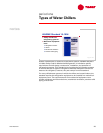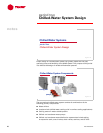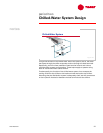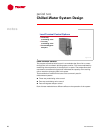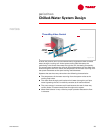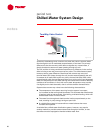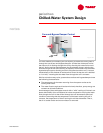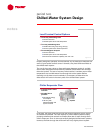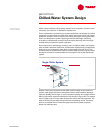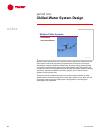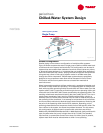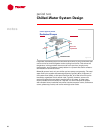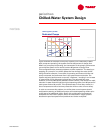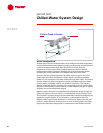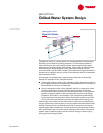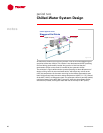
TRG-TRC016-EN 33
period two
Chilled-Water System Design
notes
effects. System effects include pump–system curve interaction, dynamic head
variations, and variation in distribution system flow.
There are benefits to maintaining a constant water flow rate through the chiller
evaporator. Constant flow provides more-stable and-simple chiller and system
operation. However, there is potential for energy savings by varying the water
flow in the distribution system. Applying these two seemingly-conflicting
principles to chilled-water systems requires careful planning and a thorough
understanding of hydraulic system operation.
Due to advances in technology, however, many of today’s chillers can operate
with variable evaporator water flow. Chilled-water systems that are specifically
designed to vary evaporator water flow are discussed in Period Three. This
period focuses on systems that employ constant water flow through the chiller
and either constant or variable water flow through the rest of the distribution
system.
Another factor that influences chilled-water system design is the number of
chillers used. Single chillers are sometimes used in small systems (less than
100 tons [35 kW]), while larger or critical systems typically use multiple chillers.
Many single-chiller systems resemble the one shown in Figure 39. This system
uses a single pump to move water through the chiller and load terminals. The
load terminals are controlled using three-way modulating valves. The pump
delivers a constant flow of water throughout the entire system, and flow
balance is relatively easy.
Single-Chiller System
pump
pump
coil
coil
three
three
-
-
way valve
way valve
air
air
-
-
cooled
cooled
chiller
chiller
Figure 39



